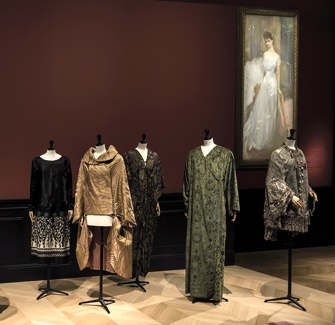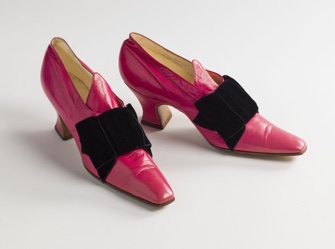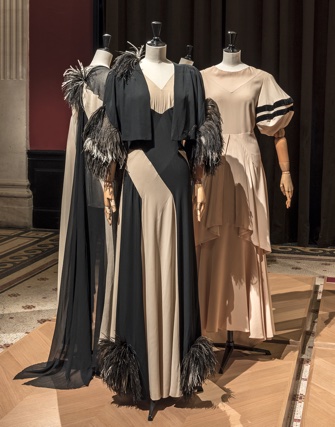
“God, what a bore it is to have to dress up and go out when one would ever so much rather stay at home,” the Duchess de Guermantes says ingenuously in Marcel Proust’s novel A la Recherche du Temps Perdu in response to a friend’s admiration of her sequined red-satin ball gown. But dress up and go out she certainly did. And so did the real-life model for

the character in Proust’s novel: the Comtesse Greffulhe. Her lavish wardrobe, so lovingly described by Proust, has survived and is the subject of the exhibition “La Mode Retrouvée: Les Robes Trèsor de la Comtesse Greffulhe” at the Palais Galliera.
Comtesse Greffulhe, the queen of Parisian aristocratic society for half a century, lived through the end of the Second Empire, two republics, two world wars, the Belle Epoque and the Roaring Twenties.
A trophy wife, married at 18 to the very rich and apparently quite nasty Viscount Henry Greffulhe, she was a celebrity mover and shaker of her times, supporting music, dance, science and Captain Dreyfus. But it was her legendary beauty and elegance that inspired Proust and the greatest couturiers of her time.
In the exhibitions, dresses designed by Charles Frederick Worth, Mariano Fortuny, Vitaldi

Babani, Jeanne Lanvin and others are simply displayed on stands, leaving you wondering at the slenderness of the countess’s waist and marvelling at the workmanship and design.
Her taste was sure, and her elegance traversed changing fashions. Exceptional items are well displayed and explained, among them the “Russian Cape,” a traditional garment from Uzbekistan, a gift of Czar Nicolas the Second that was transformed by Worth into a

magnificent evening cloak, and the bejewelled and befurred “Byzantine Dress,” in which she surely stole much of the glory at her daughter’s wedding.
As befits any Parisienne, black was an essential part of her wardrobe (the Duchess of Guermantes “never looked so well as in black velvet with diamonds,” wrote Proust), including a gorgeous Lanvin day coat that would still look wonderful if worn today, and a glorious black lace corsage overlaid on beige. Displayed nearby is her will, written when she was in her 30s, in which she provided exact details on how she should be buried – in black, of course!
The fascination of this exhibition lies in the interaction of the clothes with the personal details provided: photos, sketches, two snippets of early film taken in her garden, and the quotations from Proust and Elisabeth’s devoted cousin, the flamboyant poet

Robert de Montesquiou, a model for another Proustian character, the Baron de Charlus. Unsurprisingly, she was not insensible to the adulation, and she poses for the camera as consciously as any supermodel, with a graceful dipped head and upward look.
Lovely frocks and a fascinating story are two good reasons for a visit to the delightful Palais Galliera, just across the road from the Palais de Tokyo. The exhibition signage is almost entirely in French, but the helpful staff offered audio guides upon hearing an English accent.
Favorite
